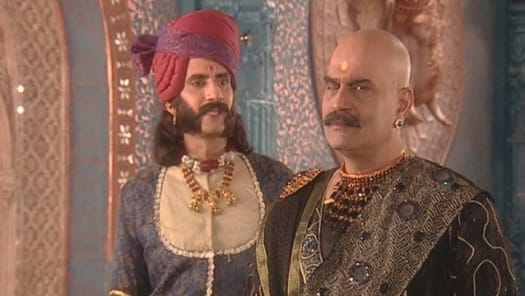
Prithviraj Chauhan, on hearing about the impending swayamvara, devised a plan to elope with the bride to be. He then commissioned a clay statue of Prithviraj, which served as a dvarpala(or, a figurative "doorman") to Jaichand's court. He invited royalty from far and wide to the ceremony, every eligible prince and king- except Prithviraj. Jaichand decided to insult Prithviraj and arranged a swayamvara for his daughter in 1185 CE. On finding out about the affair, Raja Jaichand was outraged that a romance had been budding behind his back. However, Jaichand and Prithviraj were rivals. For his part, Prithviraj had heard of Samyukta's loveliness and fell in love with her as well. She is said to have fallen in love with Prithviraj- like the two other princesses, Shashivrata and Padmavati, before her -as his reputation dazzled her. Jaichand's daughter, Samyukta, was a headstrong girl who was known for her bewitching beauty. Many lesser kings were envious and wary of his power, including Raja Jaichand of Kannauj. Īt the peak of his reign, Prithviraj had annexed vast regions of India to his kingdom, and his fame had spread all across the subcontinent and to Afghanistan. The love between Prithviraj and Samyukta is one of India's most popular medieval romances, immortalized in Chand Bardai's epic Prithviraj Raso (or, Chand Raisa), but the historicity of the Samyukta episode remains a matter of debate. He controlled much of the present-day Rajasthan, Haryana, and Delhi and some parts of Punjab, Madhya Pradesh and Uttar Pradesh.

He ruled Sapadalaksha, the traditional Chahamana territory, in present-day north-western India. Prithviraj Chauhan was a great Rajput emperor. According to the text, she was the daughter of Jaichand, the King of Kannauj, and one of three wives of Prithviraj Chauhan.


Sanyukta, also known as Sanyogita, Sanjukta, or Samyukta, is a character in the medieval Indian heroic romance Prithviraj Raso. JSTOR ( December 2009) ( Learn how and when to remove this template message).Unsourced material may be challenged and removed. Please help improve this article by adding citations to reliable sources. This article needs additional citations for verification.


 0 kommentar(er)
0 kommentar(er)
